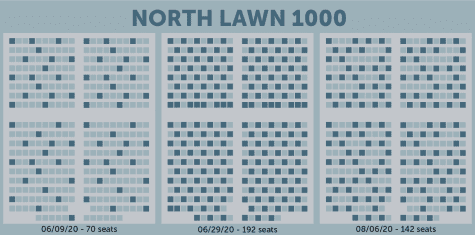How COVID-19 will change the classroom
August 13, 2020
As the fall semester approaches, the University has consistently updated students about its return plan. Though class schedules and instructional methods have yet to be solidified, here’s how administrators and professors are rolling out the policies on classroom etiquette during the pandemic.
FALL SCHEDULE CHANGES
A July 17 email from UA news confirmed that, like other schools across the country, UA students will not return to campus after Thanksgiving break. The rest of the semester will be carried out via remote learning and test administration.
Additionally, fall break has been cancelled, and classes will continue to run throughout the entire week of Oct. 26. The University does not currently anticipate changes to the Spring 2021 schedule.
After law student Haley Czarnek wrote a column charging that an acknowledgment form was misleading, the University’s mandatory student training module has now changed its language.
“In the interest of your health and safety and that of all UA students, faculty, staff, the University reserves the right to change the mode of instruction or schedule of delivery of instruction at any time, in its sole discretion, based upon prevailing public health and other guidance,” the acknowledgment form states.
COURSE DELIVERY METHODS
On July 16, UA News sent out an email noting that “course delivery methods are being updated to reflect the evolving nature of planning to return to campus in conjunction with health and safety guidelines.”
This email also informed students that “a vast majority of all classes scheduled are planning to provide some type of in-person instruction,” which could translate to more hybrid courses. Hybrid courses “will include both face-to-face interactions and online teaching components and learning activities,” Stephen Borrelli, the Department of Political Science Undergraduate Coordinator, said.
“The internet-delivered components reduce the time traditionally spent in the face-to-face portion of the course, but you will still have the opportunity for face-to-face interactions with your instructor,” Borrelli said.
Borrelli said the hybrid model could indicate that the class will meet in person during its scheduled time, but new classroom capacities could limit students to attending only one face-to-face class per week. On the other class days, the students will participate through audio and video.
“One possibility is that hybrid courses will meet in person at the scheduled times, but the classrooms can only accommodate a portion of the class in a socially distanced manner. In this type of class, all students will be able to attend class in person at least one day per week. On the other class days the students will participate via audio-video. Your instructors for the particular classes will be able to give you more information on courses coded as HY.”
ONLINE COURSE DELIVERY
Instructional strategies laid out by the University include the availability of online content for students in need of COVID-related accommodations, the use of hybrid approaches to teaching and the placement of webcams in all classrooms for recording or streaming lectures.
Students who do not feel comfortable attending class, or who have officially tested positive, must contact their professor and adhere to syllabus guidelines.
CLASSROOM SAFETY PROCEDURES
Despite the limited degree of face-to-face interaction classes will adhere to, safety procedures have already been announced. These procedures include modifying classrooms, moving classes to larger rooms for social distancing, requiring the use of masks by students and instructors while on campus, increasing routine cleaning of classrooms and installing sanitation stations and hand sanitizers near classrooms. UA recently announced that it plans to deliver 60,000 free masks to students during the fall semester.
While a cut in students per classroom has been advertised by UA, some of its largest buildings will only be reduced to half capacity. North Lawn, for example, will still operate at about 51% volume. View the charts below to see how projected capacity in North Lawn 1000 has changed over the summer.

SYMPTOM TRACKING
The University is partnering with Stay Safe Together, a program that allows students to track any COVID-19 related symptoms and notifies those who have been in contact with anyone who has self-reported as COVID-19 positive. This check-in must be completed at least every three days, according to the student training module. There is no word yet on how the University plans on enforcing the use of this application. While the symptom tracker is mandatory, according to the UA Return Plan, the exposure notifications will be voluntary.
OFFICE HOURS
Students will be able to schedule online office hours, unless a face-to-face meeting is necessary. In this case, masks will be required for all participants.
STAY TUNED
While it may seem like all bases have been covered in terms of academic affairs, there is still more to come from the University.
“Details are being determined based on the best and most current guidance from health experts and the UA Systemwide Task Force,” according to the University. “Students should be watching for an email from their academic advisers or college about specifics for their schedules.”




















